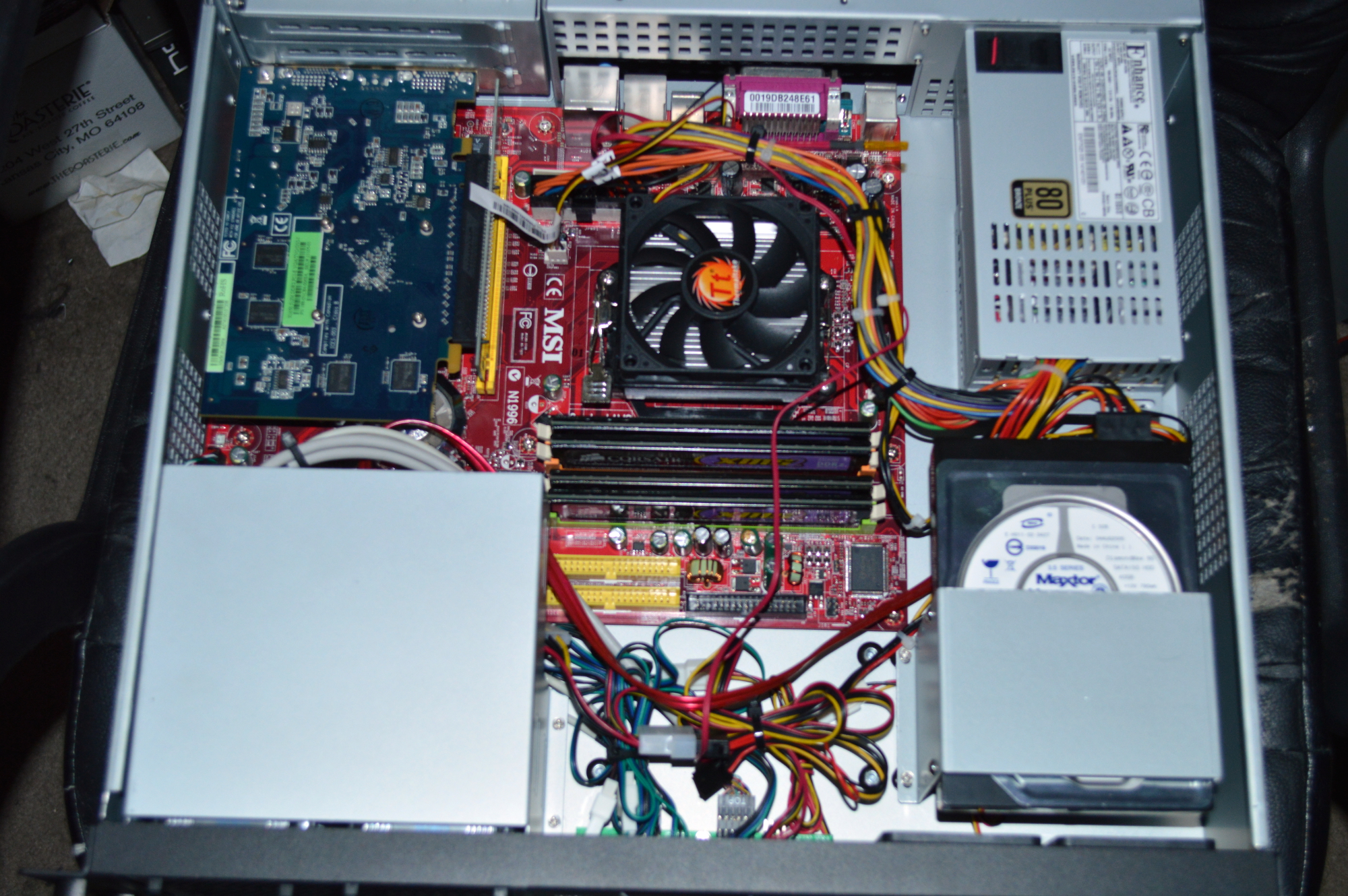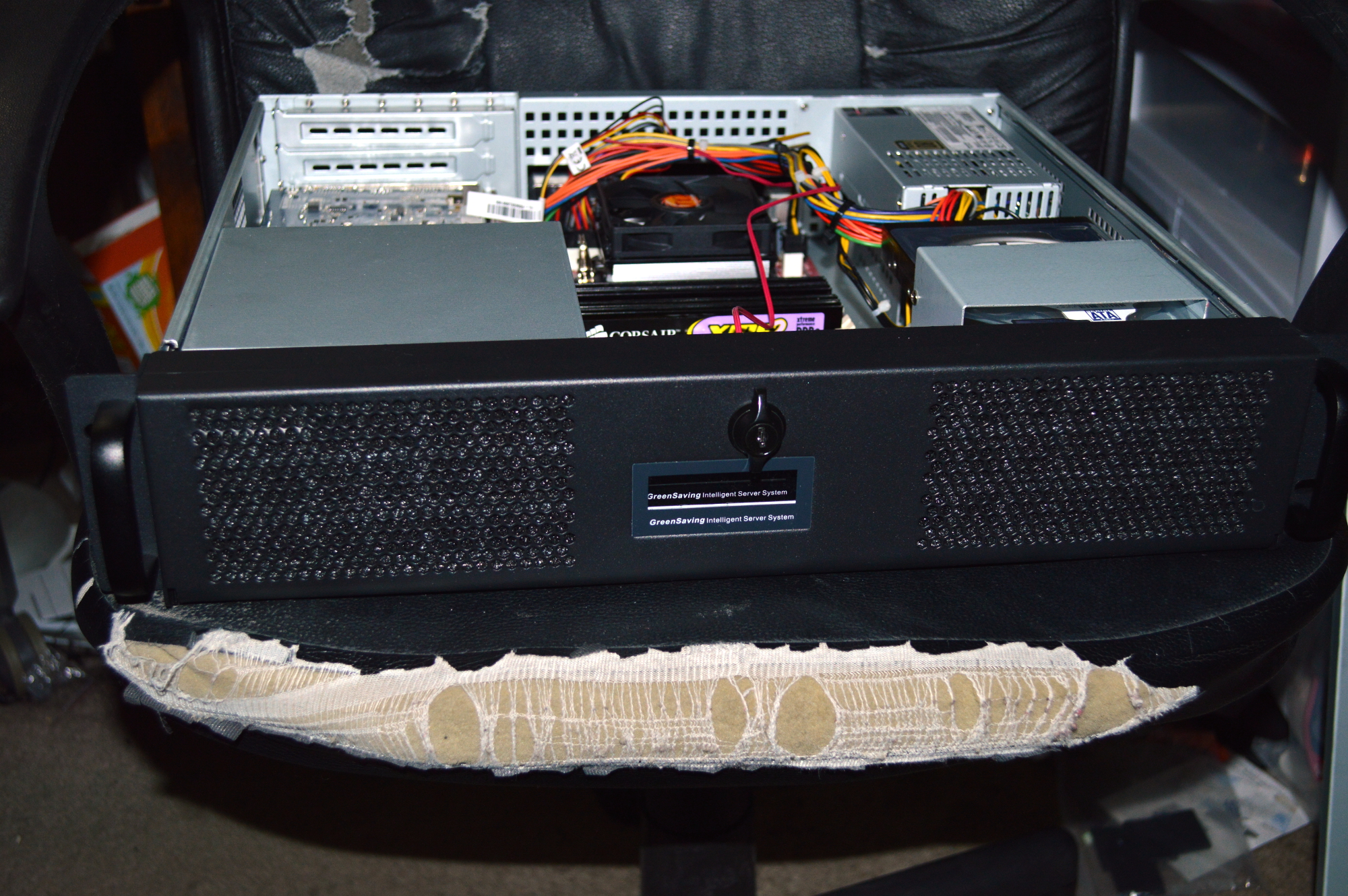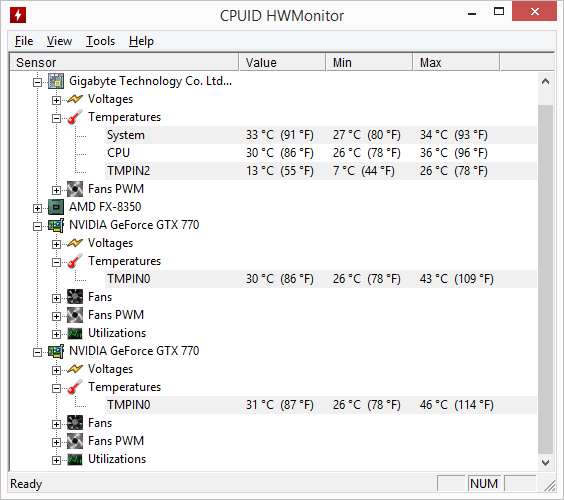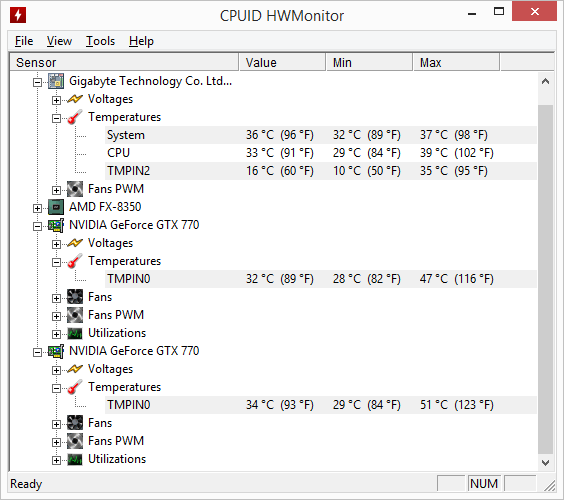- Beta Orionis
- Beta Orionis – Part II: New fans
- Beta Orionis – Part III
- Beta Orionis – Part IV
- Beta Orionis – Part V
- Beta Orionis – Part VI
- Beta Orionis – Part VII
- Beta Orionis – Part VIII: Delays
- Beta Orionis – Part IX
- Beta Orionis – Part X
- Beta Orionis – Part XI
- Beta Orionis – Part XII
- Beta Orionis – Part XIII
- Beta Orionis – Part XIV
- Beta Orionis – Part XV: Follow-up with Koolance blocks
- Beta Orionis – Part XVI: Overclocking the GPUs (or not)
- Beta Orionis – Part XVII: The AX860
- Beta Orionis – Part XVIII: New power supply and quieting things down
- Beta Orionis – Part XIX: Taking it outside
- Beta Orionis – Part XX: New loop
- Beta Orionis – Part XXI
- Beta Orionis – Part XXII
- Beta Orionis – Part XXIII
- Beta Orionis – Part XXIV
- Radiator box for PC water cooling
- Beta Orionis – Part XXV
- Corsair AX860: A retraction
- Mira
Since I last wrote an update on this build, I’ve put the Watercool GPU-X³ blocks back on the graphics cards as originally discussed. I’ll probably be putting the Koolance blocks up for sale on eBay as well after I flush them out.
So since part of the point of water cooling is to overclock your components, I started with the graphics cards. For initial reference, these cards are PNY GTX 770s. They come from PNY already overclocked from the base, and I said in an earlier article that I believe one of my two cards is actually a mislabeled OC2 version of the card. For reference here are the default specifications, compared to the base GTX 770 specifications:
- Reference GTX 770: 1046 MHz base clock, 1085 MHz boost clock
- PNY GTX 770 4GB OC: 1059 MHz base clock, 1111 MHz boost clock
- PNY GTX 770 4GB OC2: 1150 MHz base clock, 1202 MHz boost clock
On both PNY cards, the memory is not overclocked, remaining at an effective 7010 MHz.
For the adjustments, I used EVGA’s PrecisionX 16 utility. For stability testing, I used FurMark. One thing I will say is that the FurMark benchmark routine — i.e. the furry doughnut — makes it quite easy to tell when the adjustments result in artifacts.
The higher stock clocks for the cards meant that I could not actually boost the core speed much higher. Basically at a +40 MHz adjustment, the system locked up — as in “press the reset button” locked up. Basically what I have is as good as it can get without touching voltages, and I’m not going to adjust voltages. For one adjusting the voltages will reduce the lifespan of the card while not resulting in much improvement in overclocks.
I was able to achieve a 800 MHz boost on the memory clock (+400 MHz adjustment in PrecisionX), getting it up to an effective 7810 MHz.
The difference in benchmarks, though, isn’t all that impressive. In FurMark, the score went from 5893 at default clocks to 6217 overclocked, which sounds impressive. In Unigine Valley, though, the benchmarks were at 2940 at stock, 2994 overclocked, so a negligible difference. In Unigine Heaven, the benchmarks were at 1792 at stock, 1860 overclocked, also negligible. And the difference in frame rates noted in each of the tools was also negligible.
This is not surprising as the core clock matters more than memory speed for overclocking. And as PNY has apparently binned decent GTX 770 processors for their cards, and taken advantage of that by providing them overclocked from the factory, it’s not really much of a surprise I wasn’t able to get much better.
In an overclock of the GTX 770 published by AnandTech, they achieved GPU clock speeds similar to the GTX 770 OC2 from PNY, but with a slightly higher memory clock than what I achieved, and they even point out that the change in base clock made up the bulk of the improvement in their performance markers.
So unfortunately that didn’t go as well as I’d hoped, but that’s fine. The cards can handle the games currently in my library without any problem, and I see no reason why that won’t remain the case for at least a couple years.
I’ll look at bumping the CPU at a later time. Previously I mentioned getting a 300 MHz overclock on the CPU, but that was on the Gigabyte 990FXA-UD3 (Rev. 4) mainboard. I’ve since switched to the ASRock 990FX Extreme6 mainboard, so we’ll see what I can achieve on it.





























You must be logged in to post a comment.